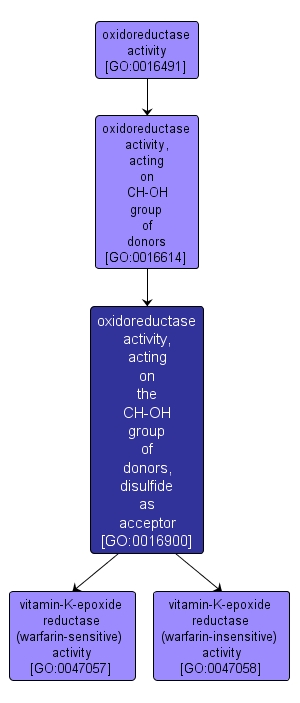GO TERM SUMMARY
|
| Name: |
oxidoreductase activity, acting on the CH-OH group of donors, disulfide as acceptor |
| Acc: |
GO:0016900 |
| Aspect: |
Molecular Function |
| Desc: |
Catalysis of an oxidation-reduction (redox) reaction in which a CH-OH group acts as a hydrogen or electron donor and reduces a disulfide molecule. |
Synonyms:
- oxidoreductase activity, acting on the CH-OH group of donors, disulphide as acceptor
|
|

|
INTERACTIVE GO GRAPH
|














